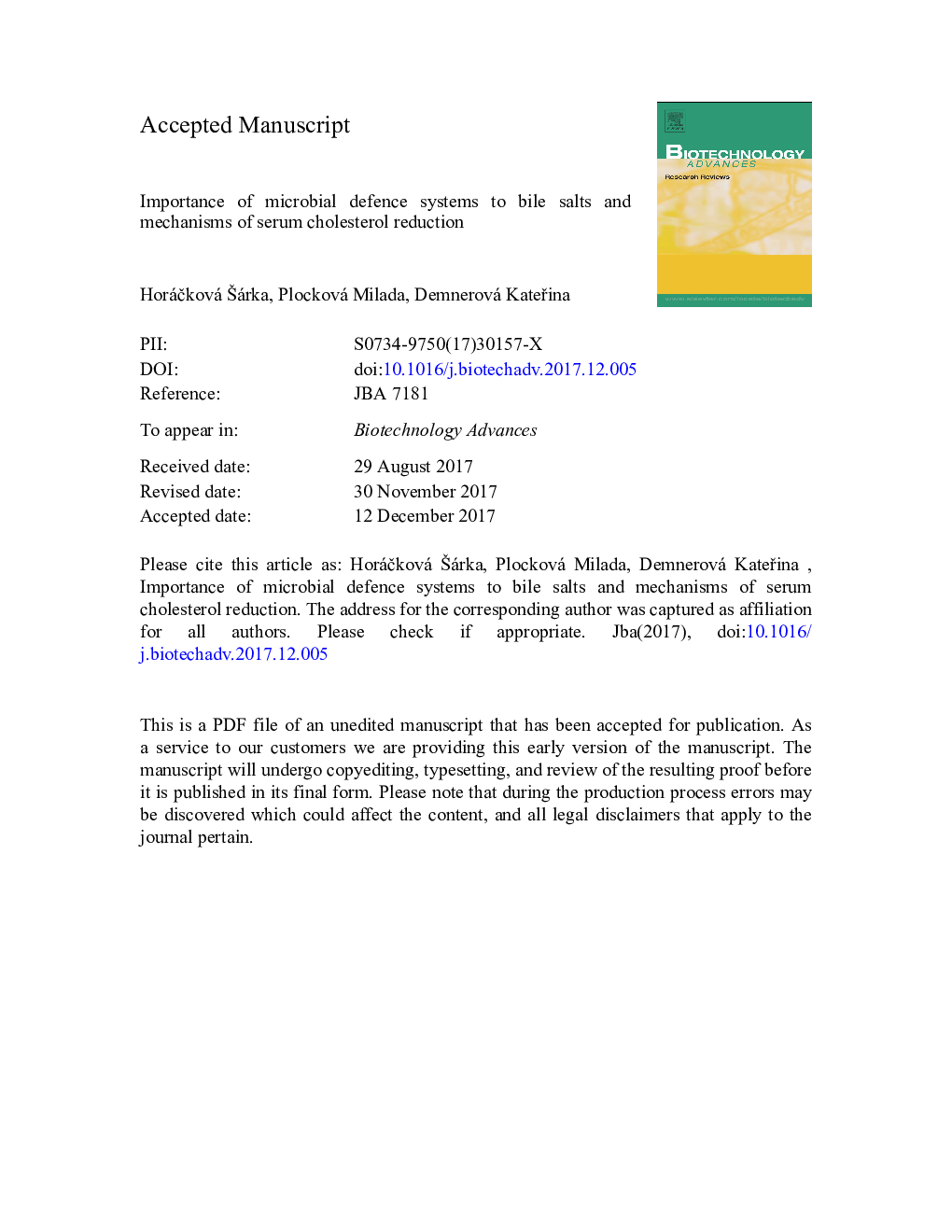| کد مقاله | کد نشریه | سال انتشار | مقاله انگلیسی | نسخه تمام متن |
|---|---|---|---|---|
| 6486636 | 1416257 | 2018 | 35 صفحه PDF | دانلود رایگان |
عنوان انگلیسی مقاله ISI
Importance of microbial defence systems to bile salts and mechanisms of serum cholesterol reduction
ترجمه فارسی عنوان
اهمیت سیستم دفاع میکروبی به نمکهای صفراوی و مکانیسم کاهش کلسترول سرم
دانلود مقاله + سفارش ترجمه
دانلود مقاله ISI انگلیسی
رایگان برای ایرانیان
کلمات کلیدی
موضوعات مرتبط
مهندسی و علوم پایه
مهندسی شیمی
بیو مهندسی (مهندسی زیستی)
چکیده انگلیسی
An important feature of the intestinal microbiota, particularly in the case of administered probiotic microorganisms, is their resistance to conditions in the gastrointestinal tract, particularly tolerance to and growth in the presence of bile salts. Bacteria can use several defence mechanisms against bile, including special transport mechanisms, the synthesis of various types of surface proteins and fatty acids or the production of exopolysaccharides. The ability to enzymatically hydrolyse bile salts occurs in a variety of bacteria. Choloylglycine hydrolase (EC 3.5.1.24), a bile salt hydrolase, is a constitutive intracellular enzyme responsible for the hydrolysis of an amide bond between glycine or taurine and the steroid nucleus of bile acids. Its presence was demonstrated in specific microorganisms from several bacterial genera (Lactobacillus spp., Bifidobacterium spp., Clostridium spp., Bacteroides spp.). Occurrence and gene arrangement encoding this enzyme are highly variable in probiotic microorganisms. Bile salt hydrolase activity may provide the possibility to use the released amino acids by bacteria as sources of carbon and nitrogen, to facilitate detoxification of bile or to support the incorporation of cholesterol into the cell wall. Deconjugation of bile salts may be directly related to a lowering of serum cholesterol levels, from which conjugated bile salts are synthesized de novo. Furthermore, the ability of microorganisms to assimilate or to bind ingested cholesterol to the cell wall or to eliminate it by co-precipitation with released cholic acid was also documented. Some intestinal microflora produce cholesterol reductase that catalyses the conversion of cholesterol to insoluble coprostanol, which is subsequently excreted in faeces, thereby also reducing the amount of exogenous cholesterol.
ناشر
Database: Elsevier - ScienceDirect (ساینس دایرکت)
Journal: Biotechnology Advances - Volume 36, Issue 3, MayâJune 2018, Pages 682-690
Journal: Biotechnology Advances - Volume 36, Issue 3, MayâJune 2018, Pages 682-690
نویسندگان
Å árka HoráÄková, Milada Plocková, KateÅina Demnerová,
